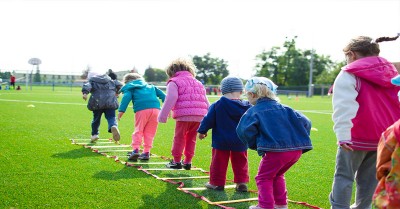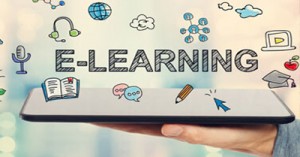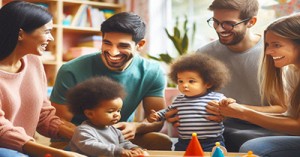Quality Area 2 of the National Quality Standard reinforces children’s right to experience quality education and care in an environment that provides for their health and safety.
Educators support this when they promote each child’s well-being and healthy lifestyle and support each child’s growing competence, confidence and independence. Learning about healthy lifestyles, including nutrition, personal hygiene (such as handwashing, dental hygiene and ear care), physical fitness, emotions and social relationships, is integral to children’s well-being and self-confidence. When children develop resilience, their ability to take increasing responsibility for their self-help and basic health routines promotes a sense of independence and confidence.
Each standard and element is represented by outcomes that contribute to the standard being achieved within the service. The following is a list of outcomes under each element within QA2, that can help services identify if they are achieving Quality Area 2. It also includes documentation to support each element. This list can be used as a guide for Self-Assessment purposes and the development of the Quality Improvement Plan.
2.1 – Each child’s health and physical activity is supported and promoted.
2.1.1 – Each child’s wellbeing and comfort is provided for, including appropriate opportunities to meet each child’s need for sleep and rest and relaxation.
This can be achieved by:
• children demonstrating a sense of belonging and comfort in their environment by recognising and communicating their bodily needs and seeking comfort and assistance from educators when required
• children being supplied with clean, appropriate spare clothes when they need them and knowing where they can access them independently
• children who do not require sleep or rest being given choice and opportunities to engage in quiet play experiences
• children being supported sensitively and positively when they are learning to use the toilet
Documentation to support this includes:
• evidence demonstrating that the service’s approach to addressing individual clothing needs and preferences is shared with families
• evidence demonstrating that the service’s approach to sleep and rest is shared with families
• evidence that babies who are asleep are checked at regular intervals
• evidence that families are provided with daily information about their child’s nappy change/toileting patterns
• planning that reflects the input of children into rules and routines of the service that relates to the comfort of individuals and the group
2.1.2 – Effective illness and injury management and hygiene practices are promoted and implemented.
This can be achieved by:
• safe and hygienic storage, handling, preparation and serving of all food and drinks consumed by children, including food brought from home
• all educators implementing the service’s health and hygiene policy and procedures
• educators actively supporting children to learn hygiene practices (including hand washing, coughing, dental hygiene and ear care)
• maintaining a hygienic environment for children
• children consuming food and drinks in a hygienic manner
• educators implementing appropriate hygiene practices in relation to hand
• washing, toileting, nappy changing and cleaning of equipment
• clean toileting and nappy-changing facilities
• fresh linen and other bedding being used for each child using a cot or a mattress
• bedding being stored hygienically (for example, in named cloth bags and not touching other children’s bedding)
Documentation to support this includes:
• policies and procedures relating to health and hygiene
• written procedures and schedules for maintaining a regular regime of washing children’s toys and equipment
• evidence that families are provided with information and support that helps them to follow the service’s hygiene procedures
• current nappy-changing and toileting procedures displayed in the toilet and nappy-changing areas
• information about correct hand-washing procedures displayed in relevant areas of the service, such as bathrooms, nappy change areas and food preparation areas
• visual aids and hand-washing signs displayed where children wash their hands.
2.1.3 – Healthy Eating and Physical activity are promoted and appropriate for each child.
This can be achieved by:
• educators engaging children in experiences, conversations and routines that promote relaxed and enjoyable mealtimes and promote healthy, balanced lifestyles
• using cooking experiences to further children’s understandings of healthy food and nutrition
• following the service’s procedures for the safe storage and heating of food and drink
• never using food to reward or punish children
• encouraging children to eat healthy food without requiring them to eat food they don’t like or to eat more than they need, including supporting children to recognise when they are hungry or ‘full’
• sitting with children and modelling, implementing and reinforcing healthy eating and nutrition practices with children during mealtimes
• consulting children about their routines and meal times
• responding to babies’ verbal and non-verbal cues about their preferred food preferences and meal times
Documentation to support this includes:
• how the planned program incorporates physical activity that meets each child’s capabilities and extends their development, including how it balances quiet/passive play times with more energetic outdoor play
• evidence that information about the importance of physical activity to children’s health and development is communicated to families
2.2 – Each child is protected.
2.2.1 – At all times, reasonable precaution and adequate supervision ensure children are protected from harm and hazard.
This can be achieved by:
• children being supervised in all areas of the service, by being in sight and/or hearing of an educator at all times, including during toileting, sleep, rest and transition routines
• children being unable to access unsupervised or unsafe areas in the service
• children only being taken outside the service premises by an educator, co-ordinator, nominated supervisor, parent or authorized nominee
• educators - supervising children closely when they are in a situation that presents a higher risk of injury—for example, during water play or woodwork experiences or on an excursion
• educators adjusting their levels of supervision depending on the area of the service and the skills, age mix, dynamics and size of the group of children they are supervising
• educators talking with children about safety issues and correct use of equipment and the environment and, where appropriate, involving children in setting safety rules
• discussing sun safety with children and implementing appropriate measures to protect children from overexposure to ultraviolet radiation such as sunburn
• closely monitoring and regularly observing sleeping children, and that all sleeping children are within hearing range
Documentation to support this includes:
• written procedures for conducting daily safety checks and identifying and undertaking the maintenance of buildings and equipment
• completed daily safety checks of buildings, equipment and the general environment
• records of pest/vermin inspections and/or eradication
• in relation to excursions - the service’s policy and procedures on excursions
• evidence of planning for excursions that include a written risk assessment undertaken prior to conducting an excursion and provided to families
• documented evidence of detailed information provided to families regarding excursions, including the destination, mode of transport, educator-to-child ratio and number of adults in attendance
• documented authorization for children to be taken outside the service’s premises or to alternative areas within the premises (for example an area of the building or school premises that is not approved space or that cannot be used during normal operating hours)
• the service’s medical conditions policy
• the service’s policy on dealing with water safety, including safety during water-based activities
• enrolment records that include authorisations and health information
• the service’s policy and procedures on sun protection and evidence that information about the service’s approach to sun protection is shared with families
• evidence that information about the service’s approach to safe sleep is documented and shared with families
2.2.2 –Plans to effectively manage incidents and emergencies are developed in consultation with relevant authorities, practised and implemented
This can be achieved by:
• emergency procedures displayed prominently throughout the premises
• nominated supervisors, co-ordinators and educators having ready access to an operating telephone or other similar means of communication
• emergency telephone numbers displayed near telephones
• service staff having ready access to emergency equipment, such as fire extinguishers and fire blankets
Documents to support this includes:
• procedures for managing incidents and emergencies and providing a child safe environment
• records of emergency drills, and evaluations of these
• a current, portable record of children’s emergency contacts that can be
• carried by educators in case of emergencies and/or evacuations
• written emergency and evacuation procedures that include instructions for what must be done in the event of an emergency and an emergency
• evacuation floor plan (for example, a plan for a bushfire in a bushfire-prone
• area)
• written plans to manage an emergency that may be likely to affect individuals at the service (for example, the management of an asthma attack, anaphylactic reaction or epileptic fit)
• written communication with families about the service’s emergency
• procedures and plans to manage incidents
• evidence that emergency equipment is tested as recommended by recognised authorities
2.2.3 – Management, educators and staff are aware of their roles and responsibilities to identify and respond to every child at risk of abuse or neglect.
This can be achieved by:
• listening and responding to families’ comments about their day-to-day observations of their child and the events occurring in their lives
• remaining vigilant about observing and responding to signs or indicators of child abuse and/ or neglect
Documentation to support this includes:
• current information about child protection procedures and expectations is provided to service staff
• nominated supervisors, educators, co-ordinators and family day care educator assistants have attended training or professional development on child protection
• information is provided to families about the service’s practices in relation to child protection
• nominated supervisors, educators and co-ordinators work collaboratively with other authorities and/or professionals to support children who have specific protection needs
• educators’ families have been provided with information and/or training to support their understanding and response to suspected child protection issues
• a current list of local community resources that can provide information and support for children, families and service staff in relation to children at risk of abuse and/or neglect.
Please note that this is to be used as a general guideline only. Please read the Guide To The NQS for more detailed information of what is required for each standard.
Reference:
New Guide To The National Quality Framework, Australian Children’s Education and Care Quality Authority.







 Here is the list of the EYLF Learning Outcomes that you can use as a guide or reference for your documentation and planning. The EYLF
Here is the list of the EYLF Learning Outcomes that you can use as a guide or reference for your documentation and planning. The EYLF The EYLF is a guide which consists of Principles, Practices and 5 main Learning Outcomes along with each of their sub outcomes, based on identity,
The EYLF is a guide which consists of Principles, Practices and 5 main Learning Outcomes along with each of their sub outcomes, based on identity, This is a guide on How to Write a Learning Story. It provides information on What Is A Learning Story, Writing A Learning Story, Sample
This is a guide on How to Write a Learning Story. It provides information on What Is A Learning Story, Writing A Learning Story, Sample One of the most important types of documentation methods that educators needs to be familiar with are “observations”. Observations are crucial for all early childhood
One of the most important types of documentation methods that educators needs to be familiar with are “observations”. Observations are crucial for all early childhood To support children achieve learning outcomes from the EYLF Framework, the following list gives educators examples of how to promote children's learning in each individual
To support children achieve learning outcomes from the EYLF Framework, the following list gives educators examples of how to promote children's learning in each individual Reflective practice is learning from everyday situations and issues and concerns that arise which form part of our daily routine while working in an early
Reflective practice is learning from everyday situations and issues and concerns that arise which form part of our daily routine while working in an early Within Australia, Programming and Planning is reflected and supported by the Early Years Learning Framework. Educators within early childhood settings, use the EYLF to guide
Within Australia, Programming and Planning is reflected and supported by the Early Years Learning Framework. Educators within early childhood settings, use the EYLF to guide When observing children, it's important that we use a range of different observation methods from running records, learning stories to photographs and work samples. Using
When observing children, it's important that we use a range of different observation methods from running records, learning stories to photographs and work samples. Using This is a guide for educators on what to observe under each sub learning outcome from the EYLF Framework, when a child is engaged in
This is a guide for educators on what to observe under each sub learning outcome from the EYLF Framework, when a child is engaged in The Early Years Learning Framework describes the curriculum as “all the interactions, experiences, activities, routines and events, planned and unplanned, that occur in an environment
The Early Years Learning Framework describes the curriculum as “all the interactions, experiences, activities, routines and events, planned and unplanned, that occur in an environment


